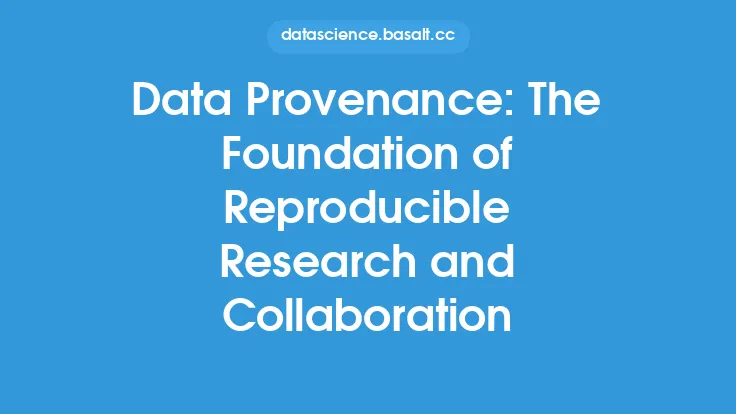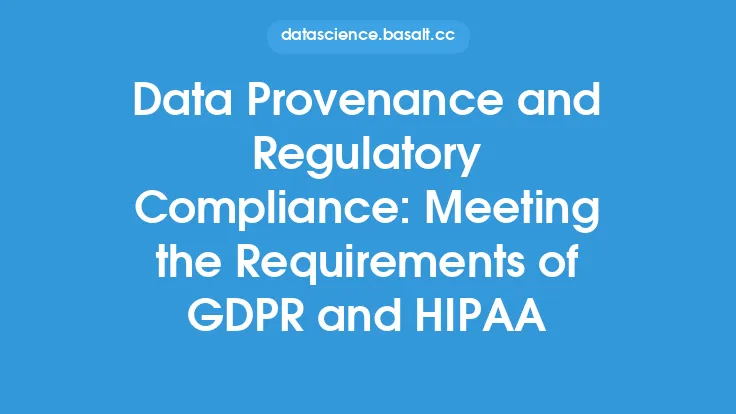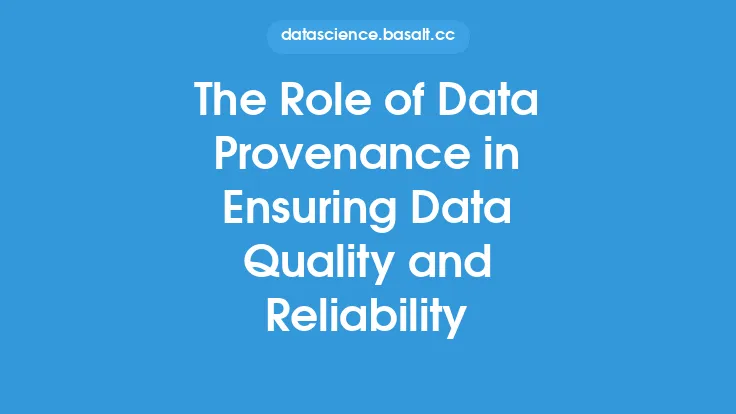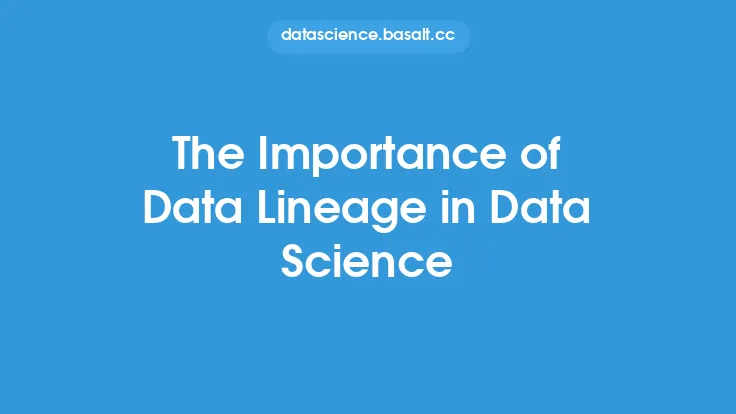Data provenance is a critical aspect of data quality that involves tracking the origin, history, and evolution of data throughout its lifecycle. It provides a detailed record of the data's creation, processing, storage, and dissemination, allowing organizations to understand the context and reliability of their data. In today's data-driven world, understanding data provenance is essential for making informed decisions, ensuring data accuracy, and maintaining trust in the data.
What is Data Provenance?
Data provenance refers to the process of documenting and tracking the origin, transformation, and movement of data throughout its entire lifecycle. It involves capturing metadata about the data, such as its source, creation date, processing history, and any modifications made to it. This metadata provides a clear understanding of the data's lineage, allowing organizations to assess its quality, reliability, and relevance. Data provenance is not just limited to the data itself but also includes information about the people, processes, and systems involved in its creation, processing, and dissemination.
Key Components of Data Provenance
There are several key components of data provenance that are essential for tracking data origins. These include:
- Data source: The origin of the data, including the person, system, or process that created it.
- Data creation: The date, time, and method of data creation, including any relevant metadata.
- Data processing: A record of any transformations, aggregations, or modifications made to the data, including the algorithms, tools, and personnel involved.
- Data storage: Information about where the data is stored, including the storage system, location, and access controls.
- Data dissemination: A record of how the data is shared, including the recipients, transmission methods, and any relevant metadata.
- Data quality: An assessment of the data's accuracy, completeness, and consistency, including any data validation or verification processes.
Benefits of Data Provenance
Understanding data provenance offers numerous benefits, including:
- Improved data quality: By tracking data origins and history, organizations can identify and address data quality issues, ensuring that their data is accurate, complete, and consistent.
- Increased transparency: Data provenance provides a clear understanding of the data's lineage, allowing organizations to demonstrate the reliability and trustworthiness of their data.
- Enhanced collaboration: By providing a shared understanding of the data's context and history, data provenance facilitates collaboration and communication among stakeholders.
- Better decision-making: With a clear understanding of the data's origins and history, organizations can make more informed decisions, reducing the risk of errors or misinterpretations.
- Regulatory compliance: Data provenance is essential for meeting regulatory requirements, such as GDPR and HIPAA, which mandate the tracking and documentation of data origins and processing.
Technical Aspects of Data Provenance
Implementing data provenance requires a range of technical capabilities, including:
- Metadata management: The ability to capture, store, and manage metadata about the data, including its source, creation date, and processing history.
- Data lineage: The ability to track the data's movement and transformation throughout its lifecycle, including any changes or modifications made to it.
- Data versioning: The ability to manage different versions of the data, including any updates or revisions made to it.
- Data storage: The ability to store and manage large volumes of data, including any relevant metadata.
- Data analytics: The ability to analyze and visualize the data, including any relevant metadata, to gain insights into its origins and history.
Challenges and Limitations of Data Provenance
While data provenance offers numerous benefits, there are also several challenges and limitations to consider, including:
- Data complexity: The increasing volume, variety, and velocity of data can make it difficult to track and manage data provenance.
- Data silos: The existence of data silos can make it challenging to integrate and manage data provenance across different systems and departments.
- Lack of standardization: The lack of standardization in data provenance can make it difficult to compare and integrate data from different sources.
- Scalability: The ability to scale data provenance to meet the needs of large and complex organizations can be a significant challenge.
- Security: The need to ensure the security and integrity of data provenance, including any relevant metadata, is essential for maintaining trust and confidence in the data.
Best Practices for Implementing Data Provenance
To implement data provenance effectively, organizations should follow best practices, including:
- Develop a data provenance strategy: Establish a clear understanding of the organization's data provenance needs and goals.
- Implement metadata management: Capture and manage metadata about the data, including its source, creation date, and processing history.
- Use data lineage tools: Utilize tools and technologies to track the data's movement and transformation throughout its lifecycle.
- Establish data versioning: Manage different versions of the data, including any updates or revisions made to it.
- Provide training and education: Educate stakeholders about the importance of data provenance and how to implement it effectively.
Conclusion
Understanding data provenance is essential for organizations that rely on data to make informed decisions. By tracking the origin, history, and evolution of data, organizations can ensure the accuracy, completeness, and consistency of their data, ultimately leading to better decision-making and increased trust in the data. While there are challenges and limitations to implementing data provenance, following best practices and leveraging technical capabilities can help organizations overcome these hurdles and reap the benefits of data provenance.





